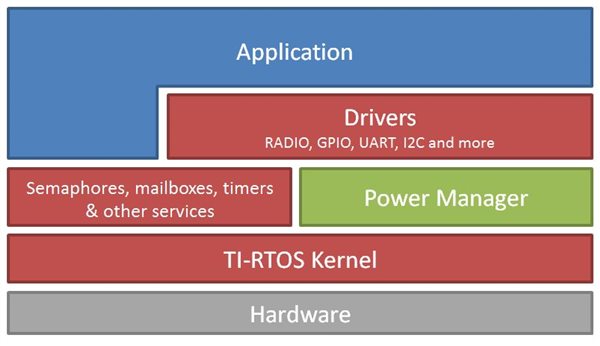SSZTBW9 november 2015 CC1310
In the currently competitive Industrial Internet of Things (IIoT) environment, a quick time to market for new products is crucial. Everything needs to be done quickly, but you also need to be able to scale for years to come and be ultra-low power. As product requirements grow in size and complexity, so does the software.
Let’s say you are developing a brand new battery-powered wireless product. You have the specification in hand and the first three things you conclude are:
- You need to interact with several sensors.
- The application is complex and uses lots of states and strict radio timing.
- Low power is critical. In fact, the battery life will be a major differentiator of your product.
There is a plethora of solutions to solve the above challenges, but there are a few key features that would save a lot of effort when developing this wireless product. Multi-threading and resource sharing support will ease partitioning and scale application logic. Hardware drivers will accelerate interfacing with peripheral drivers. Integrated power management will enable the application to automatically enter low-power modes. All of these features may be found in a Real-Time Operating System (RTOS).

Using a modern RTOS would mean access to tasks for code partitioning with deterministic behavior, extensive driver support and a highly integrated power manager. An RTOS that is tailored for a targeted device will mean less time wasted doing mundane, repetitive, tasks and more time spent working on the actual application.
Always look for new ways to accelerate your industrial embedded application development.
Take a look at TI-RTOS at www.ti.com/tool/ti-rtos for a complete software ecosystem with a mature multi-threading, preemptive, kernel, extensive hardware drivers and fully integrated power manager.
For a new generation of ultra-low power wireless devices, please see the SimpleLink ultra-low power wireless microcontrollers. Supporting multiple standards with highly integrated TI-RTOS support, it will both provide future scalability and fast time to market. See www.ti.com/simplelinkulp for more information.